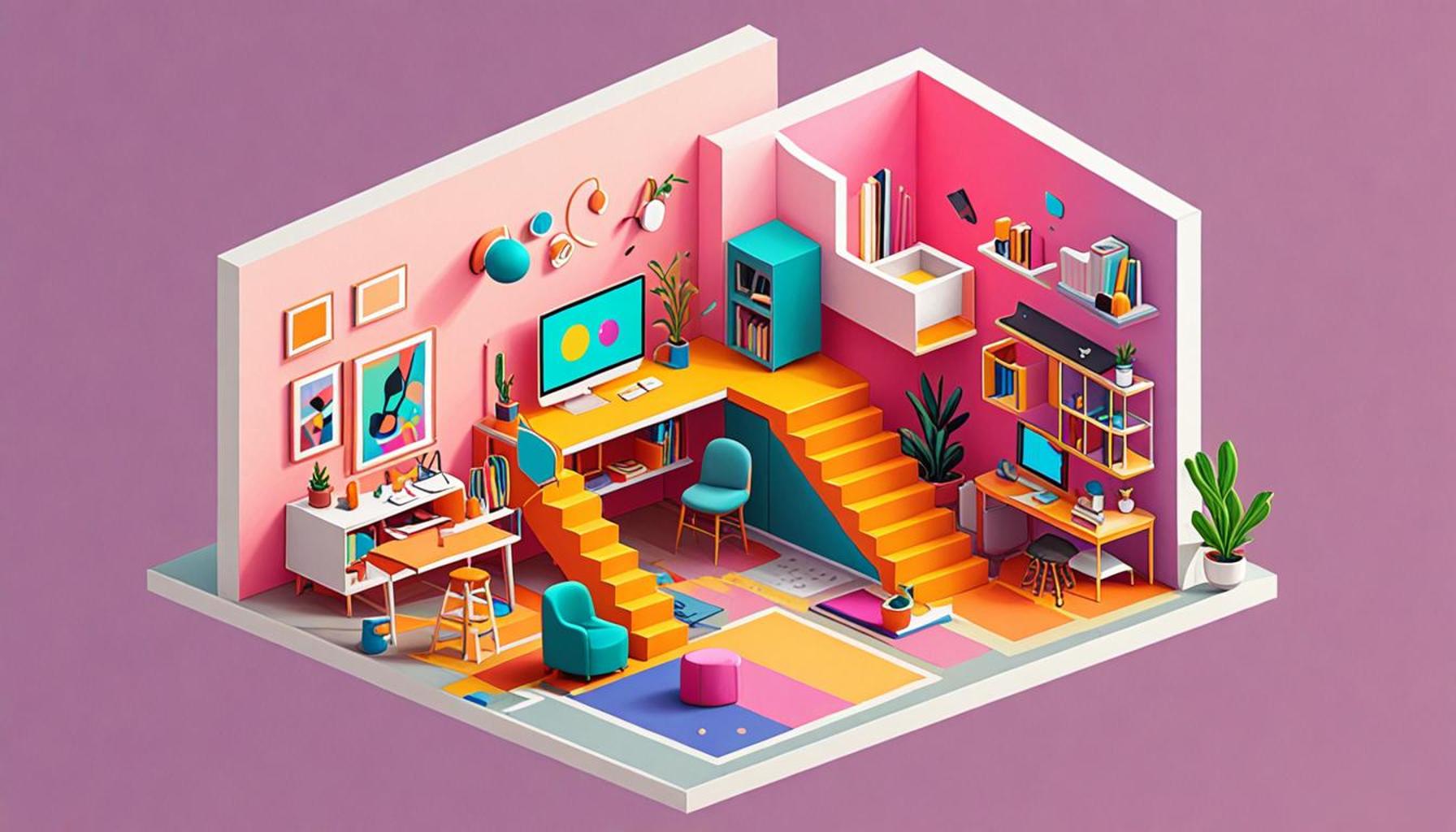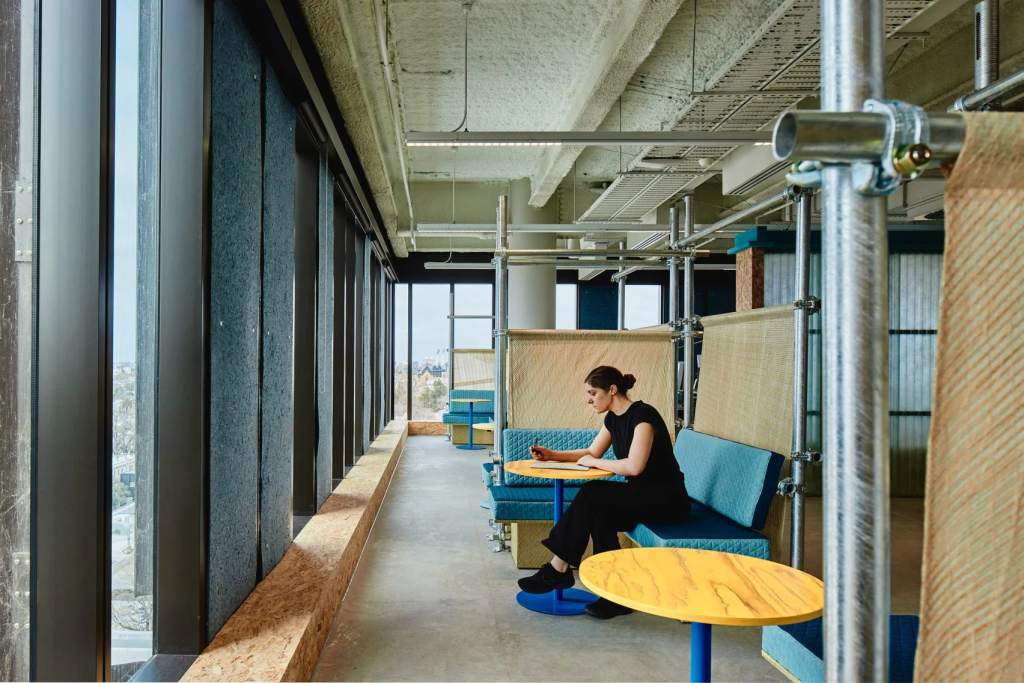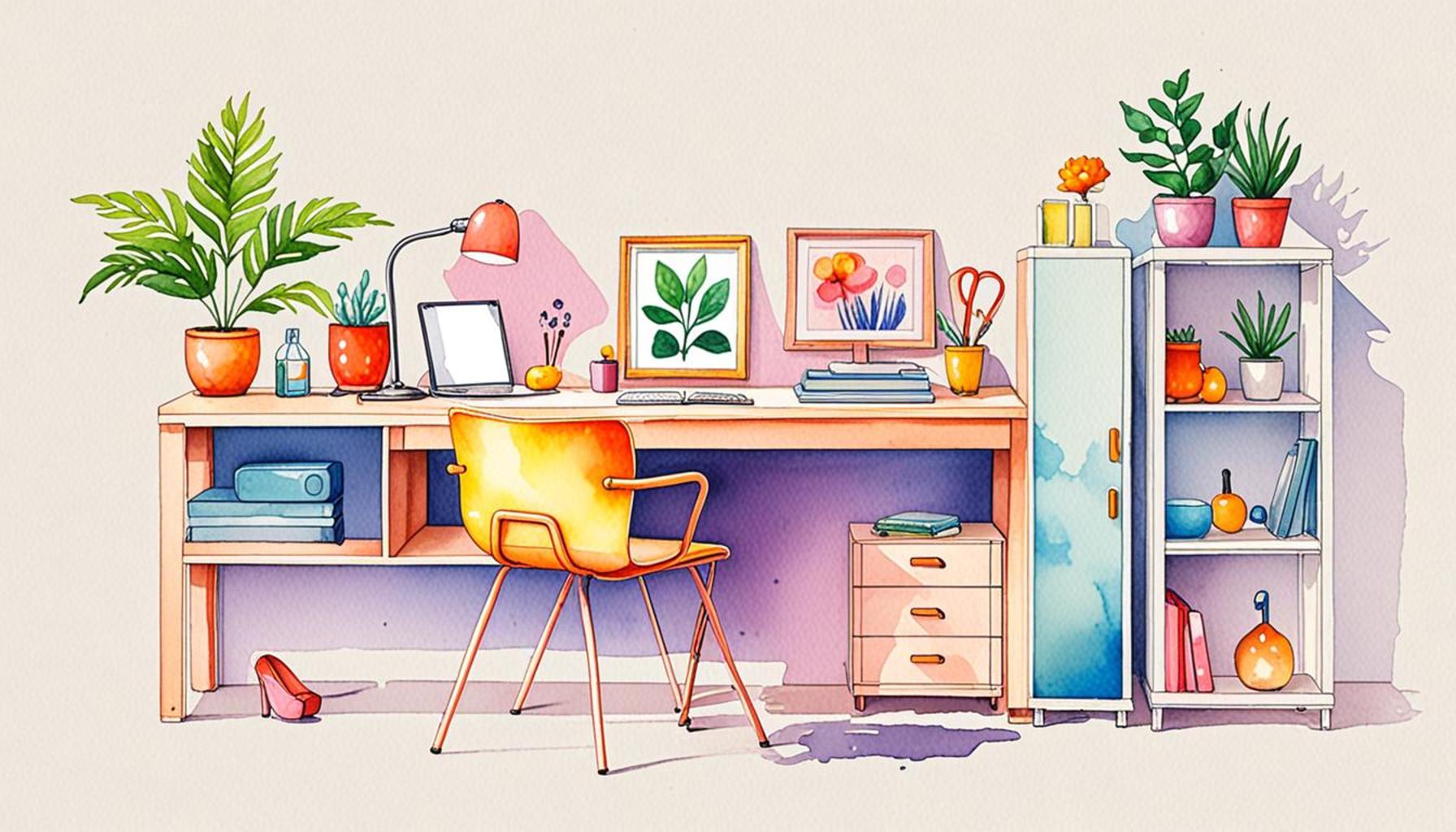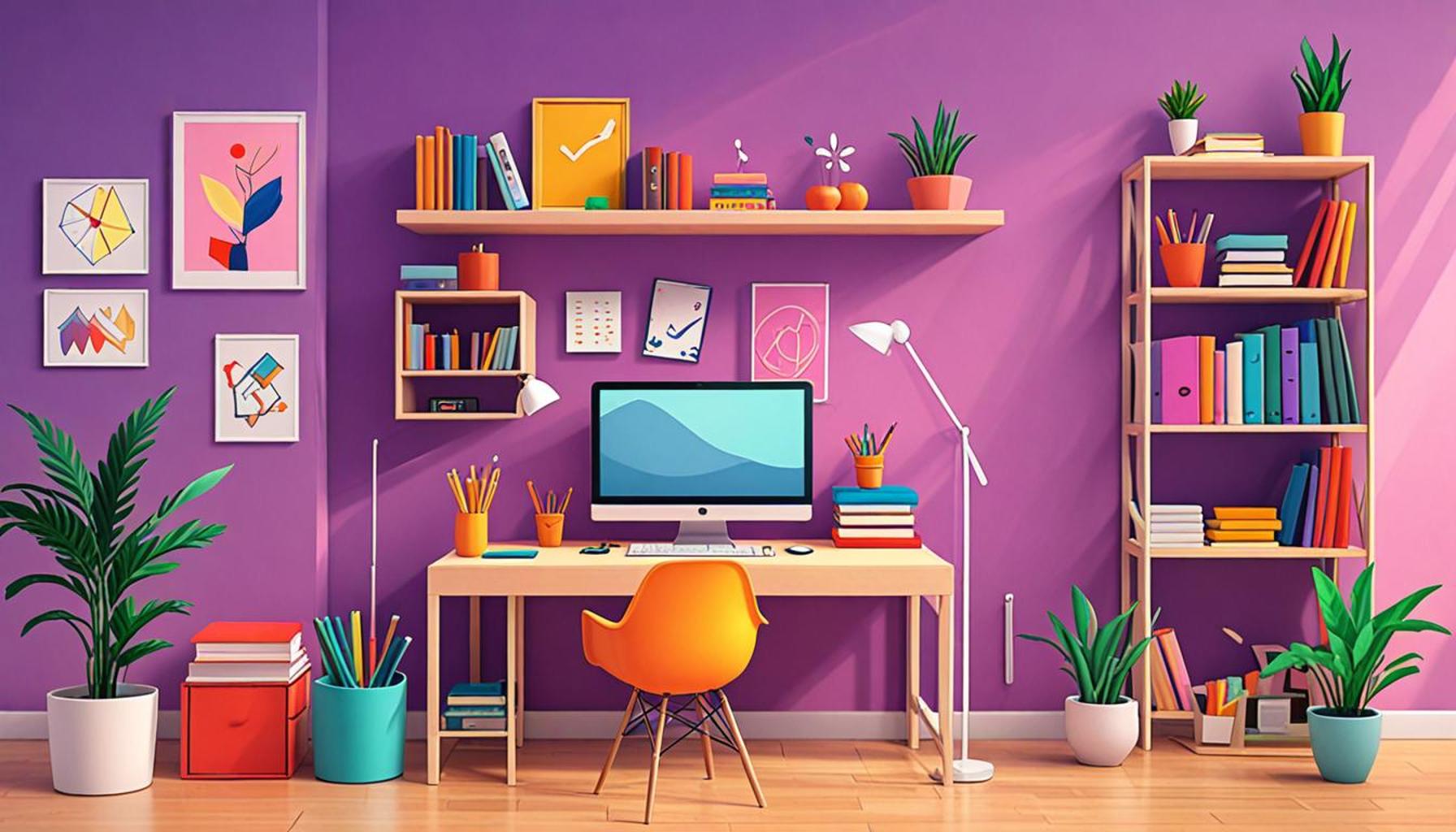How Minimalism Can Increase Spatial Efficiency in Small Spaces

Understanding the Challenge of Limited Living Space
In an age where urban living is on the rise, many individuals find themselves grappling with the realities of confined quarters. With the increasing trend of smaller homes, apartments, and even tiny houses, living spaces are becoming a topic of great interest. A small space, while cozy, can often feel cramped and chaotic, leading to heightened stress and disorganization. However, adopting a minimalist approach can serve as an essential remedy to this pervasive issue.
The Power of Decluttering
The journey to a more manageable living area begins with decluttering. This process entails evaluating possessions and making the conscious choice to remove what no longer serves a purpose. Consider this: how many items in your living space have you used in the past year? By focusing on essentials, you can reclaim crucial physical space and significantly lighten your mental load. Experts in organization suggest that a room filled to the brim with objects can lead to feelings of anxiety and distraction. In contrast, a decluttered space fosters tranquility and focus.
Multi-Purpose Furniture for Maximum Efficiency
Another cornerstone of maximizing limited space is the selection of multi-purpose furniture. Opting for versatile items is a strategic way to enhance functionality. For instance, a sofa bed can serve as both a comfortable seating arrangement during the day and transform into a cozy sleeping area at night. Foldable tables can efficiently transition from a dining surface for entertaining friends to a compact workspace for remote work. This type of furniture not only saves space but also adds to the aesthetic appeal of a home.
Smart Storage Solutions
Employing smart storage solutions is equally crucial in navigating the challenges of small spaces. Innovative ideas such as vertical shelving can make excellent use of wall space, while under-bed storage allows you to tuck away seasonal items or extra linens discreetly. Consider using decorative baskets or labeled boxes to keep often-used items organized yet easily accessible. This keeps surfaces clear and contributes to an overall tidy appearance, enhancing the sense of serenity in your home.
The Philosophy of Minimalism
Minimalism transcends the mere act of reducing physical possessions; it is about prioritizing what’s truly important in life. By engaging in this philosophy, individuals learn to celebrate experiences rather than material possessions. It inspires reflection—making room for mental clarity and emotional freedom. The practice encourages not just a cleaner environment but a more fulfilling existence.

Adapting to Modern American Living
Statistics reveal a significant shift in the American housing landscape. Today, many families reside in smaller homes compared to previous generations, making it increasingly vital to maximize spatial efficiency. According to recent studies, the average new single-family home in the United States has shrunk in size by nearly 20% over the past decade. This reality highlights the need for innovative living solutions that can enhance comfort and usability.
In conclusion, embracing the principles of minimalism has the potential to transform your small living space into a haven of efficiency and comfort. By decluttering, choosing multi-purpose furniture, and utilizing smart storage strategies, you can create an inviting and functional home tailored to your lifestyle. As you explore these minimalist approaches, consider how they can help you foster not only a neat environment but also a more fulfilling way of living.
DISCOVER MORE: Click here to find effective decluttering strategies
Embracing Minimalism in Small Spaces
The adoption of a minimalist lifestyle is not merely a trend but a practical solution tailored for those living in small spaces. This movement encourages individuals to prioritize simplicity and intentionality, reshaping how we interact with our surroundings. As the notion of having “less is more” gains traction, people are discovering the profound impacts that minimalism can have on spatial efficiency. It becomes imperative to explore how this philosophy can be harmonized with modern living.
Defining Minimalism in Context
Minimalism, at its core, is the discipline of stripping away the excess to highlight what truly matters. This concept extends beyond aesthetics; it encompasses a lifestyle choice that resonates particularly well with those residing in urban environments. In cities like New York, San Francisco, or Los Angeles, where living costs are escalating and space is dwindling, minimalism offers a flexible framework for better utilization of available areas. Those who embrace this philosophy often report not only enhanced productivity but also reduced stress, allowing them to focus on their priorities without the distraction of clutter.
Prioritizing Functional Decor
One of the most effective ways to increase spatial efficiency is through the use of functional decor. This means selecting items that serve a dual purpose or that can be collapsed or stored when not in use. For example:
- Expandable dining tables can comfortably seat guests when entertaining but are adjustable and compact for everyday meals.
- Wall-mounted desks provide a workspace without sacrificing floor area, folding away when not in use.
- Ottomans and benches that double as storage solutions can clear visual clutter while serving as additional seating.
By intentionally selecting multifunctional pieces, individuals can maintain an aesthetically pleasing environment without overwhelming their spaces.
Creating Zones in Small Areas
Another strategy for enhancing spatial efficiency revolves around the concept of zoning. Even in compact apartments, creating distinct areas—such as a sleeping nook, a reading corner, or a workspace—can contribute immensely to the overall functionality of a space. By dividing areas for specific purposes, residents can better manage their living environment. Incorporating area rugs can serve as a visual cue, delineating spaces and adding depth without consuming physical space. Utilizing creative room dividers, such as bookshelves or curtains, can also be an effective way to separate zones while still allowing for an open atmosphere, making it essential to maintain fluidity in smaller settings.
The Impact of Natural Light
Additionally, maximizing natural light has a significant influence on the perceptions of space. Large windows and well-placed mirrors can create an illusion of spaciousness, reflecting light and making a room look larger than it actually is. This aspect of design is especially valuable for those living in small apartments, where every square foot counts. Embracing minimalism encourages the use of lighter color palettes and clear surfaces that amplify light, contributing to an overall aura of openness and clarity.
In essence, minimalism is not just about reducing clutter; it’s a strategic approach to enhancing spatial efficiency in small living areas. By focusing on functional decor, creating zones, and embracing natural light, individuals can cultivate a serene and organized environment that transforms the way they live and thrive.
Understanding Minimalism in Small Spaces
Minimalism is not merely a design aesthetic but a lifestyle choice that can significantly enhance spatial efficiency, especially in small spaces. By adopting the principles of minimalism, individuals can create environments that feel more open and less cluttered, allowing for better functionality and improved mental clarity.
Key Principles of Minimalism
One of the core tenets of minimalism is meticulous planning and intentionality. Each item brought into a home is chosen for its utility and aesthetic value, ensuring that everything has a purpose. This approach minimizes unnecessary purchases, which often lead to clutter. Another principle is the careful selection of color palettes; lighter shades can make a room feel larger, while dark colors can absorb light and create a more confined feel.Additionally, incorporating multifunctional furniture can significantly enhance spatial efficiency. For instance, a coffee table that doubles as storage or a sofa bed provides both utility and comfort without compromising space. This adaptability is crucial in small living areas, where every square inch counts.
Benefits of Minimalism in Small Living Areas
Embracing a minimalist lifestyle leads to numerous advantages in small spaces. Firstly, it fosters a sense of calm and balance, allowing occupants to focus on what truly matters. The absence of visual clutter can alleviate stress, leading to improved mental health and productivity. Furthermore, maintaining a minimalist environment can simplify cleaning routines, providing more time and energy for activities that bring joy.Minimalism also allows for greater flexibility in arrangement and function. Without the burden of excess items, homeowners can rearrange their spaces frequently, optimizing layouts that cater to social gatherings or personal relaxation.To delve deeper into the benefits of minimalism, please explore the accompanying table.
| Advantage | Description |
|---|---|
| Increased Functionality | Multi-functional furniture allows for versatile use of space, making living areas more efficient. |
| Enhanced Mental Clarity | Less visual clutter leads to reduced stress and improved focus in daily activities. |
Implementing minimalism effectively enables individuals to enjoy the full potential of their small spaces, making it an appealing choice for those seeking efficiency and harmony in their living environments.
DISCOVER MORE: Click here to learn about minimalism and sustainability
Enhancing Spatial Efficiency Through Organized Storage
Successful minimalism thrives on the principle of organized storage, which plays a crucial role in maintaining a tidy environment. In small spaces, every inch counts; thus, innovative storage solutions become essential. Traditional furniture often prioritizes aesthetics over functionality, but embracing the minimalist mindset can turn furniture into clever storage units. For instance, bed frames with built-in drawers or under-bed containers explicitly maximize room capacity without compromising style. Similarly, employing vertical storage solutions, such as wall shelves or hanging organizers, can transform blank wall space into functional areas that contribute to efficient organization.
Utilizing Multi-Functional Furniture
When exploring spatial efficiency, integrating multi-functional furniture is paramount. This concept not only caters to functionality but also aligns with minimalist values. Numerous brands now offer designs that prioritize dual-purpose use without sacrificing aesthetics, including:
- Sofa beds: They provide comfortable seating during the day and convert into a sleeping area for guests at night.
- Convertible coffee tables: These can rise to dining table height, perfect for hosting small meals or casual gatherings.
- Storage ottomans: These versatile pieces serve as footrests while doubling as hidden compartments for magazines, games, or blankets.
Investing in such items enables homeowners to minimize clutter and maximize space, ultimately enhancing the functionality of often-overlooked areas in a residence.
Mindful Decluttering Rituals
The pathway to a truly minimalist space is paved with regular decluttering rituals. Emphasizing a sustained commitment to maintain an organized lifestyle can lead to significant improvements in spatial efficiency. Establishing monthly or seasonal schedules to review and reassess belongings encourages conscious decisions about what to keep or discard. Adopting the one-in-one-out rule—where one item must be removed for every new item acquired—provides an effective countermeasure against modern consumerism and material accumulation. Furthermore, the emotional connection to possessions often leads to an inability to part with items, but taking a pragmatic view can facilitate this process, allowing individuals to curate only what genuinely contributes to their lives.
The Role of Color and Design
An often-overlooked aspect of spatial efficiency is the use of color and design theory. Light, neutral colors can make small areas feel expansive by reflecting light rather than absorbing it. Shades like soft whites, grays, or pale blues can contribute to a calming atmosphere, while strategic use of darker accents can create depth without overwhelming the visual space. Textures and patterns can be employed as well, choosing smaller prints that don’t visually clutter an area helps maintain a clean look. Minimalist design principles advocate for a cohesive theme throughout the space, ensuring harmony in furnishings, which further enhances spatial perception.
Increasing spatial efficiency in small spaces is attainable through various approaches, all rooted in the principles of minimalism. By embracing organized storage, multi-functional furniture, mindful decluttering, and intentional design choices, individuals can create environments that are not just aesthetically pleasing but are also remarkably efficient. In a world where urban living spaces are tightening, the minimalist lifestyle emerges as a viable solution, transforming how we interact with and perceive our living environments.
DISCOVER MORE: Click here to learn about maximizing your space
Conclusion: Embracing Minimalism for Optimal Living Spaces
In conclusion, the journey towards achieving greater spatial efficiency in small spaces is intricately tied to the principles of minimalism. By adopting organized storage solutions, integrating multi-functional furniture, maintaining diligent decluttering rituals, and leveraging thoughtful color and design choices, individuals can redefine the boundaries of their living areas. The rise of urbanization in the United States compels us to re-examine how we utilize our limited spaces, making minimalism more relevant than ever.
Transforming a small space into a functional and aesthetically pleasing environment is not merely about reducing possessions; it’s about fostering a lifestyle that values utility and intentionality. Each aspect of a home, from furniture to decor, can contribute to an ecosystem of efficiency, enabling residents to live comfortably despite space constraints. Ultimately, the minimalist philosophy advocates for a holistic approach to living—a reconsideration of what truly matters and how our possessions can enhance our daily experiences.
As we embrace these principles, we not only maximize our living spaces but also cultivate a simpler, more meaningful way of life. By exploring the myriad possibilities that minimalism offers—whether that be through innovative storage methods or the smart design of furniture—we unlock the potential to thrive in our homes, regardless of size. For those seeking to explore these transformative paths further, a wealth of resources, ideas, and community support awaits, making the minimalist journey both attainable and rewarding.


